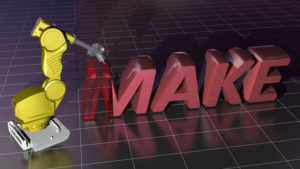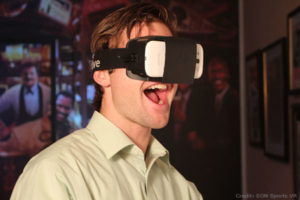
Part 1 of this three-part series addresses the way technology has made prisoners of office workers, who spend large parts of their lives confined to spaces much smaller than the typical jail cell.
The very nature of humanity has been changed by the nature of modern work. Where once workers were lean, muscled and tan, now they are pudgy, stooped and wrist-warped. The problem comes from restricted movement over long stretches in the day.
“The human body craves movement,” said Joseph J. Sweere, D.C., professor in the chiropractic clinical sciences division and chairman of the department of occupational health in the College of Chiropractic at Northwestern Health Sciences University.
“We move in the womb and even in our sleep,” he told TechNewsWorld. “It’s necessary to dissipate waste and for our organs to function properly. Yet we sit at work with our joints locked in the loaded position for hours on end.”
Computers have chained employees to one spot, effectively stopping hearts, blurring eyes, freezing joints, and lifting sugar levels. The damage is doubled as workers move home by car or public transportation and then sit chained to technology again, either in front of a television or another computer.
Given that technology has weakened man in innumerable ways, can it also restore him to his former state of health?
Experts say yes. The technological cure need not even be all that extravagant or even painful, according to Mayo Clinic.
No Pain, Lots of Gain
The most benefit comes from non-exercise activity thermogenesis (NEAT), argues James Levine, M.D., a professor of medicine at Mayo Clinic.
Basically, you burn more calories and get more health benefits overall from short bursts of everyday activity than you do from organized exercise, his research shows.
Levine’s team used some very sophisticated wearable computing technology that measured every wiggle and every shift from bum cheek to bum cheek. These “data-logging undergarments” were filled with sensors that measured total body movement, a far cry from the standard-issue pedometer.
The gist of the recommendations that emerged from the study is wiggle while you work. Take frequent strolls down the hall to the water cooler. Tap your foot while sitting. Stretch often. Little movements like that, done frequently, will keep you healthy, says Levine.
Others have upped the ante on the heels of Levine’s research. Take Nashville cyclist Steve Ferrusi, for example. He designed the FitDesk exercise bike, which allows users to support their weight on the bike while keeping their hands free to use a keyboard or game controller. Users can stop and peddle the bike at random or peddle leisurely while working. It is designed to be a low-key movement exercise worked in randomly as users see fit.
In the Upright Position
Still other inventors are working to relieve the strain from sitting still. Where once ergonomic chairs were touted as the best way to accomplish this, now entire ergonomic programs — complete with special computer glasses — are the way to go. These total packages are designed to improve posture, relieve joint pressures, and reduce muscle and eye strain.
“A lot of people promote the idea that sitting at computers all day long is a major cause of back pain, and that because people in less industrialized areas are more physically active, they have less pain,” Dana Davis, certified balance method posture instructor and a certified yoga yeacher, told TechNewsWorld.
“However, the research of Noelle Perez-Christiaens in Paris, France, has shown that if people work at desk jobs and still have healthy posture like they do in Portugal, they don’t develop back pain,” noted Davis.
Smartphones also can cause human frame breakdown through poor posture. Text neck is a condition caused by tilting the head forward and down for extended periods of time while texting or emailing on the phone.
“This has been shown in medical research to cause early onset of spinal degeneration and arthritis as well as a long list of well documented medical conditions,” Dean L. Fishman, D.C., ofThe Text Neck Institute told TechNewsWorld.
Fishman invented an app for that. Neurotilt Text Neck App is available only for Android phones at the moment. It alerts the user to prolonged neck strain and offers a suite of exercises for alleviating neck pain. It also tracks and scores posture throughout the day, helping the user to correct problems while on the go.
Preventing Spidey-Senses
Other inventors are hard at work to defend users from less obvious problems associated with working with technology.
“The World Health Organization and European Commission have raised concerns about the health risks from everyday radiation,” Aziza M. Ali, a spokesperson for Belly Armor by RadiaShield, told TechNewsWorld.
“Similar to smoking or sun exposure, many of these risks occur over time; given the dramatic increase in radiation exposure over the past decade, we are only now starting to see the impacts,” said Ali.
Belly Armor is a line of products developed to protect pregnant women and their fetuses from radiation from computers, printers and other common office technologies.
Still other inventors are looking at ways to relieve tingling extremities by eradicating repetitive movements entirely. Peter Freer, president of Freer Logic, envisions total mind control, for example. “Hands-free,” in his mind, equates to carpel-tunnel-syndrome-free.
Freer has invented a small armband sensor, the BodyWave, that monitors brain activity and wirelessly sends commands to the PC. You can’t work everything on the computer with your mind — at least, not yet. But you can operate avatars and equipment in 3D training simulations designed to reduce stress and increase focus on the training exercise.
If the user is too stressed or distracted, the exercise will stop and disengage. It cannot be engaged again until the user relaxes and concentrates on the exercise again. Biofeedback in the form of a bar on the screen functions as a gauge of the user’s mental state, enabling self-adjustment.
No doubt more technologies are on the way to alleviate health problems for workers who spend all day strapped to one technology or another. The question is not whether such technologies exist, but whether they will be adopted by workers and employers alike.





















































